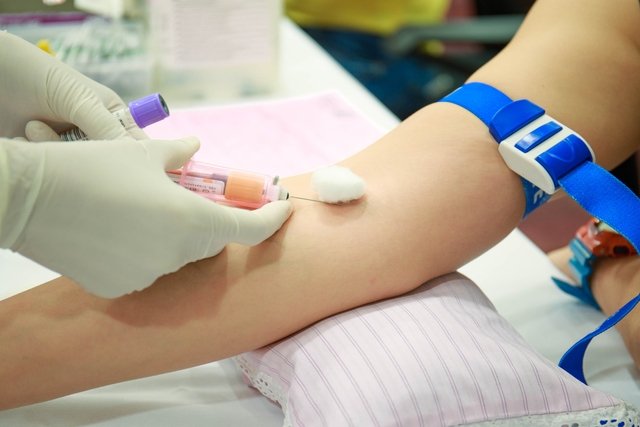Latuda (lurasidone): what it is for, how to take it and side effects
Content:
Lurasidone, known by the trade name Latuda, is an antipsychotic drug used to treat symptoms of schizophrenia and depression caused by bipolar disorder.
This medication was recently approved by Anvisa for sale in pharmacies in Brazil, in 20mg, 40mg and 80mg tablets, in packs of 7, 14, 30 or 60 tablets, and can be found or ordered in the main pharmacies. As it is an antipsychotic, Lurasidone is part of the category of controlled drugs and sale only with special prescription in two ways.

what is it for
Lurasidone is used to treat:
- Schizophrenia, in adults and adolescents aged 13 to 18 years;
- Depression associated with bipolar disorder, in adults, alone or in combination with others, such as lithium or valproate.
This medication is an antipsychotic, which acts as a selective blocking agent of the effects of dopamine and monoamine, which are brain neurotransmitters, important for improving symptoms.
However, it works with some improvements over older antipsychotics, such as minor changes in metabolism, having less effect on weight gain and changes in the body's fat and glucose profile.
How to take
Lurasidone tablets should be taken orally once a day with a meal, and it is recommended that they be taken at the same time every day. In addition, the tablets must be swallowed whole to avoid their bitter taste.
Possible side effects
Some of the most common side effects of lurasidone are drowsiness, restlessness, dizziness, involuntary movements, insomnia, restlessness, anxiety or weight gain.
Other possible effects are convulsions, decreased appetite, lethargy, blurred vision, tachycardia, changes in blood pressure, dizziness or changes in blood count, for example.
who shouldn't take
Lurasidone is contraindicated in the presence of:
- Hypersensitivity to the active ingredient or to any of the excipients in the tablet;
- Use of strong CYP3A4 inhibitor drugs, such as Boceprevir, Clarithromycin, Voriconazole, Indinavir, Itraconazole or Ketoconazole, for example;
- Use of strong CYP3A4 inducing drugs such as Carbamazepine, Phenobarbital, Phenytoin, Rifampicin or St John's Wort, for example.
Due to the interaction with the effect of these medications, the list of medications used must always be informed to the accompanying physician.
Lurasidone should be used with caution in people with moderate to severe kidney disease or liver disease, Parkinson's disease, movement disorders, cardiovascular disease or other neurological disorders. In addition, this medication has not been tested in elderly patients with dementia or in children, so its use should be avoided in these cases.
Leave a Reply
In order to leave comments, you need to log in




0 Comments